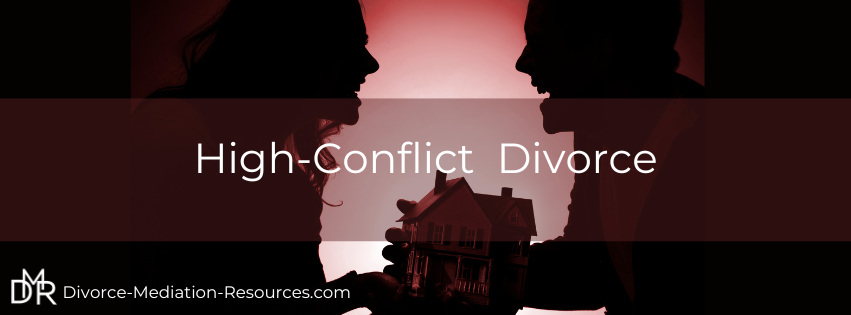In high-conflict divorces, two primary positional stances often emerge: the victim and the victimizer. The victim typically experiences fear and struggles to make decisions independently, while the victimizer believes they are justified in their actions, often asserting that their partner deserves nothing. In this dynamic, the victimizer tends to minimize the victim’s contributions, and the victim is significantly impacted by the victimizer’s words and reactions.
Divorces involving domestic violence are generally not suitable for mediation; however, some attorneys may also lack the expertise to manage high-conflict situations effectively. These lawyers often fail to recognize that the victim seeks reassurance that legal representation cannot provide. The victimizer frequently adopts a combative stance towards any legal team, disputing guidelines, stipulations, or laws that do not align with their agenda. This agenda typically aims to leave the victim financially and emotionally destitute.
In such scenarios, the victim finds themselves at the mercy of a lawyer or judge, neither of whom may have the necessary emotional insight or decision-making authority over an individual’s life. Judges and lawyers interpret and apply laws but cannot dictate on emotional realities. Therefore, in high-conflict divorces, it is essential to educate and inform both parties to help them understand their respective positions.
While these cases can be prolonged, they don’t need to be, if both parties recognize the end goal and take the opportunity to reflect on their own behaviors to make more constructive decisions.
In many cases the victimizer wants to prolong divorce proceedings as means of enacting revenge, ensuring the victim endures further suffering. Consequently, while a divorce may be finalized, the victim must remain vigilant, as the victimizer is unlikely to cease their aggressive behaviors. This can lead to additional legal matters, overstepping boundaries, harassment, aimed at reducing the victim’s resources and reducing the victimizers support obligations.
In my experience as a divorce mediator, I have frequently encountered couples in challenging situations. Often, the victim seeks reassurance that their feelings are validated. While it is important to acknowledge their experiences, merely compiling a list of negative behaviors or inappropriate conduct does not address the core issue. The victim must recognize that they can no longer tolerate such behaviors and understand their responsibility to seek appropriate emotional support, as well as prepare to confront their abuser.
Conversely, the victimizer often attempts to present themselves favorably, shifting blame onto the victim and claiming that the victim is the source of the chaos. They evade accountability for their actions, justifying their behavior and portraying themselves as wronged. In these situations, I emphasize to both parties the necessity of professional guidance to help them perceive the reality of their circumstances. When both refuse to seek help and insist on proceeding with the divorce, it becomes essential to exercise extreme caution, ensuring that all facts and disclosures are thoroughly addressed.
Regrettably, victims often find themselves at a disadvantage, while the victimizer maintains control over the situation. In some instances, it may be prudent for the victim to cut their losses to prevent the vicimizer from exerting further influence. When violence is present in a marriage, divorce may be the most effective means of regaining self-control.
Individuals who are codependent and lack the capacity for independent thought must seek assistance to cultivate the courage and understanding needed to recognize unhealthy behaviors.
The victim requires guidance to restore their sense of self-independence, while the perpetrator must gain insight into the fact that they do not possess control over another individual. Victimizers cannot dictate another person’s thoughts or actions. If they find themselves dissatisfied with someone else’s behavior, it indicates their own codependency; thus, they should reflect on their circumstances and work towards reclaiming their independence and accountability.
This codependent relationship can no longer persist on its current destructive trajectory, where one partner imposes their beliefs onto the other, leading to mutual entrapment in emotional dependency. In such dynamics, both individuals are hindered from expressing their creativity and pursuing personal desires.
It is imperative for codependent couples to seek professional assistance to address and disentangle the need for control and submission. While this journey is challenging and requires time, recognizing the nature of these dynamics is the first step toward seeking the essential help both partners urgently need.
